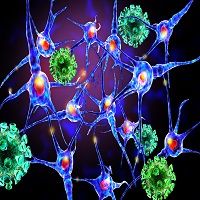Article
Direct Nerve Stimulation Can Help Some Multiple Sclerosis Symptoms
Author(s):
Direct current stimulation can improve certain reaction times in MS patients.

Anodal transcranial direct current stimulation (tDCS) over the right parietal cortex can help improve reaction times in visual vigilance tests but not subjective feelings of fatigue for people with multiple sclerosis (MS), according to the results of a recent study. Conducted by Katrin Hanken of the Department of Psychology at Carl von Ossietzky University Oldenburg in Germany, and colleagues, the study was published in the journal Frontiers in Neurology on September 21, 2016.
In MS patients, vigilance decrement, or worsening performance in vigilance tasks, usually “strongly correlates with self-reported fatigue and appears approximately after 20-30 minutes, reflecting in longer reactions times (RTs) and an increase in errors,” say the researchers. Vigilance is associated with activity in the right hemisphere of the brain, specifically in the “cortical areas, such as the dorsomedial, mid- and ventrolateral prefrontal cortex, the anterior insula, the intraparietal sulcus, and the temporo-parietal junction,” say the authors.
Since tDCS has been shown to enhance neural activity, the researchers say the aim of the present study was to “investigate whether anodal tDCS over the right frontal or the right parietal cortex might be able to counteract vigilance decrement in cognitively fatigued MS patients.”
They completed two stages to gather results. First they tested healthy individuals to find out if right frontal or right parietal stimulation was more likely to improve vigilance (study I). Then, they say, “the anodal stimulation with the best outcome was then tested in study II, in which the effect of stimulation of both objective and subjective fatigue was analyzed in cognitively fatigued MS patients.”
“The results of study I and study II indicate that anodal stimulation over the right parietal cortex counteracts the performance decrement during a vigilance task, which is primarily reflected in the RT data” say the researchers. However, for MS patients, “the positive effect of parietal stimulation was restricted to patients suffering from mild to moderate cognitive fatigue,” report the researchers.
The stimulation conditions of the two studies were slightly different, which represents a limitation. Additionally, the researchers did not test vigilance before stimulation. However, even with those limitations, they conclude, “our results indicate that anodal tDCS over the right parietal, but not over the right frontal cortex, can counteract the increase in RT that is frequently observed during a vigilance task,” adding that tDCS appears to work best for patients who are mildly to moderately cognitively fatigued.
Related Coverage:
Multiple Sclerosis Patient Fatigue Depends on Task Length


